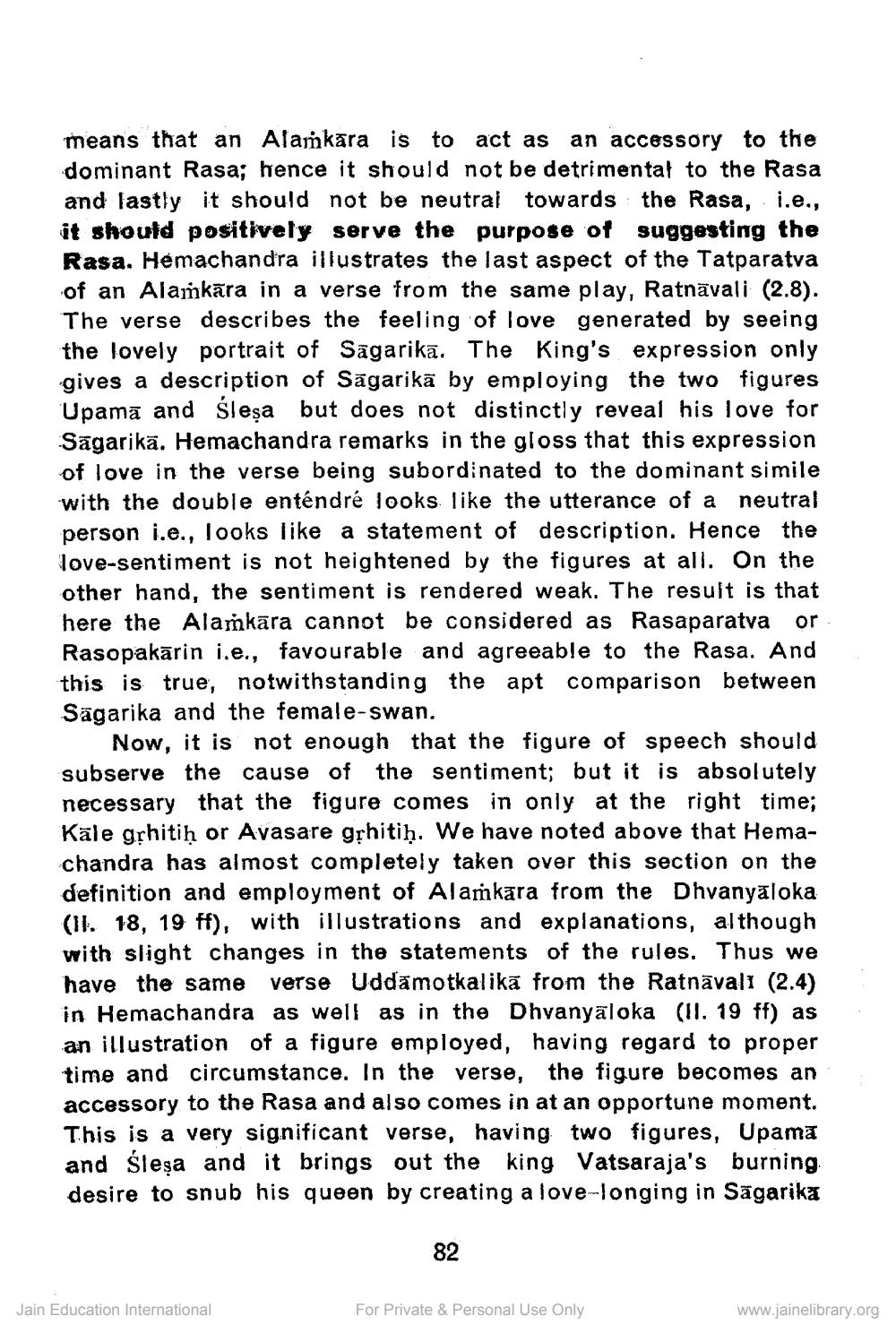________________
means that an Alamkāra is to act as an accessory to the dominant Rasa; hence it should not be detrimental to the Rasa and lastly it should not be neutral towards the Rasa, i.e., it should positively serve the purpose of suggesting the Rasa. Hemachandra illustrates the last aspect of the Tatparatva of an Alamkāra in a verse from the same play, Ratnāvali (2.8). The verse describes the feeling of love generated by seeing the lovely portrait of Sagarikā. The King's expression only gives a description of Sāgarikā by employing the two figures Upamā and slesa but does not distinctly reveal his love for Sāgarikā. Hemachandra remarks in the gloss that this expression of love in the verse being subordinated to the dominant simile with the double enténdré looks like the utterance of a neutral person i.e., looks like a statement of description. Hence the love-sentiment is not heightened by the figures at all. On the other hand, the sentiment is rendered weak. The result is that here the Alamkāra cannot be considered as Rasaparatva or Rasopakārin i.e., favourable and agreeable to the Rasa. And this is true, notwithstanding the apt comparison between Sagarika and the female-swan.
Now, it is not enough that the figure of speech should subserve the cause of the sentiment; but it is absolutely necessary that the figure comes in only at the right time; Kāle grhitih or Avasare gļhitih. We have noted above that Hemachandra has almost completely taken over this section on the definition and employment of Alamkara from the Dhvanyaloka (IX. 18, 19 ff), with illustrations and explanations, although with slight changes in the statements of the rules. Thus we have the same verse Uddamotkalikā from the Ratnāvali (2.4) in Hemachandra as well as in the Dhvanyaloka (II. 19 ff) as an illustration of a figure employed, having regard to proper time and circumstance. In the verse, the figure becomes an accessory to the Rasa and also comes in at an opportune moment. This is a very significant verse, having two figures, Upama and slesa and it brings out the king Vatsaraja's burning desire to snub his queen by creating a love-longing in Sāgarika
82
Jain Education International
For Private & Personal Use Only
www.jainelibrary.org




